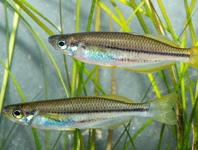Abstract
Larvae of a previously unknown species of gall midge were found feeding on young fruit of mango, Mangifera indica (Anacardiaceae), in Guangxi Autonomous Region in southern China, causing severe damage to the crop. The new species is named Procontarinia fructiculi Jiao, Wang, Bu & Kolesik, its morphology is described, the basic biology is given, and the Cytochrome Oxidase subunit I (COI) mitochondrial gene segment is sequenced and compared to other congeners. Procontarinia contains now 16 described species, each feeding on mango. All but three species cause variously shaped galls on leaves, while P. mangiferae (Felt) malforms inflorescence and young leaves, and two species feed on fruit – P. frugivora Gagné causing deep lesions and P. fructiculi sp. nov. tunnel-like holes. Of the two fruit-feeding species, P. frugivora is confined to the Philippines while the new species has thus far been recorded only from southern China.
References
Amouroux, P., Normand, F., Nibouche, S. & Delatte, H. (2013) Invasive mango blossom gall midge, Procontarinia mangiferae (Felt) (Diptera: Cecidomyiidae) in Reunion Island: ecological plasticity, permanent and structured populations. Biological Invasions, 15(8), 1677–1693.
https://doi.org/10.1007/s10530-012-0400-0Cai, H.J., Kolesik, P., Wang, H.Y., Liao, F.R., Quintao, V., Harris, K.M. & Bellis, G.A. (2013) Description of the immature stages and gall morphology, and molecular characterisation of Procontarinia robusta, a gall midge (Diptera: Cecidomyiidae) damaging leaves of mango Mangifera indica L. (Anarcadiaceae) in southern Asia. Australian Journal of Entomology, 52, 206–211.
https://doi.org/10.1111/aen.12027
Felt, E.P. (1927) Four new Indian gall midges. Memoirs of the Department of Agriculture in India, 10, 1–4.
Gagné, R.J. & Medina, C.D.R. (2004) A new species of Procontarinia (Diptera: Cecidomyiidae), an important new pest of mango in the Philippines. Proceedings of the Entomological Society of Washington, 106, 19–25.
Gagné, R.J. & Jaschhof, M. (2017) A Catalog of the Cecidomyiidae (Diptera) of the World. 4th Edition. Digital. U.S. Department of Agriculture, c/o Smithsonian Institution, Washington, DC. Available from: https://www.ars.usda.gov/ARSUserFiles/80420580/Gagne_2017_World_Cat_4th_ed.pdf (accessed 11 July 2017)
Harris, K.M. & Schreiner, I.H. (1992) A new species of gall midge (Diptera: Cecidomyiidae) attacking mango foliage in Guam, with observations on its pest status and biology. Bulletin of Entomological Research, 82, 41–48.
Kalleshwaraswamy, C.M., Rami Reddy, P.V. & Sharanabasappa. (2016) New report of fruit infesting gall midge on mango. Pest Management in Horticultural Ecosystems, 22 (1), 84–87.
Kieffer, J.-J. & Cecconi, G. (1906) Un nuovo dittero galligeno su foglie di Mangifera indica. Marcellia, 5, 135–136.
Kolesik, P. (2015) A review of gall midges (Diptera: Cecidomyiidae: Cecidomyiinae) of Australia and Papua New Guinea: Morphology, biology, classification and key to adults. Austral Entomology, 54, 127–148.
https://doi.org/10.1111/aen.12100Kolesik, P., Rice, A.D., Bellis, G.A. & Wirthensohn, M.G. (2009) Procontarinia pustulata, a new gall midge species (Diptera: Cecidomyiidae) feeding on mango, Mangifera indica (Anarcadiaceae), in northern Australia and Papua New Guinea. Australian Journal of Entomology, 48, 310–316.
https://doi.org/10.1111/j.1440-6055.2009.00721.xKolesik P., Rice, A., Thistleton, B., Tenakanai, D., Quintao, V., Medina, C.D.R., Thien, M.M., Heng, C.H., Halling, L.A. & Bellis, G.A. (2017) Mango gall midges on Australia’s doorstep. Proceedings of the Xth International Mango Symposium, Darwin, 28 September – 2 October 2015. Acta Horticulturae, 1183, 279–286.
https://doi.org/10.17660/ActaHortic.2017.1183.40Li, J., Bu, W. & Zhang, Q. (2003) A new species of gall midge (Diptera: Cecidomyiidae) attacking mango leaves from China. Acta Zootaxonomica Sinica, 28, 148–151.
Medina, C.D.R., Ronquillo, S.J.Q., Mendioro, M.S., Kolesik, P. & Newton, I. (2017) Morphological and molecular characterization of the various species of Procontarinia (Diptera: Cecidomyiidae) attacking mango in the Philippines. Proceedings of the Xth International Mango Symposium, Darwin, 28 September–2 October 2015. Acta Horticulturae, 1183, 287–290.
https://doi.org/10.17660/ActaHortic.2017.1183.41Min, T. & Barfod, A. (2008) Anacardiaceae. In: Wu, Z.Y., Raven, P.H. & Hong, D.Y. (Eds.), Flora of China. Vol. 11. Science Press, Beijing, pp. 335–357.
Shi, D. (1980) A new species of gall midge affecting young leaf of mango (Diptera: Cecidomyiidae). Entomotaxonomia, 11, 131–134.
Talukdar, B. (2007) Studies on the diversity of mango gall midges (Diptera: Cecidomyiidae) in West Bengal. PhD thesis, Department of Agricultural Entomology, Faculty of Agriculture, Bidhan Chandra Krishi Viswavidyalaya (Bidhan Chandra Agricultural University), Mohanpur, West Bengal, 207 pp.

